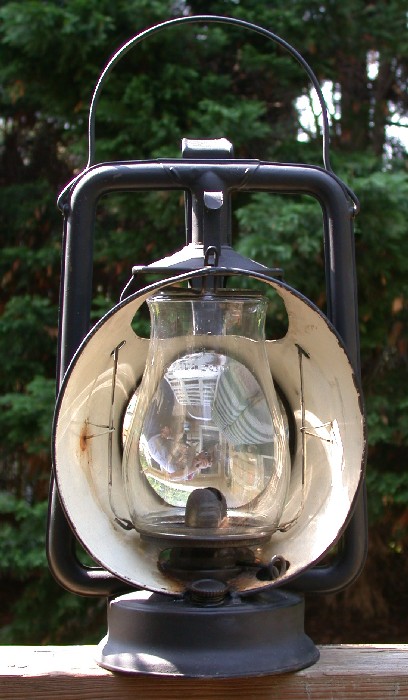
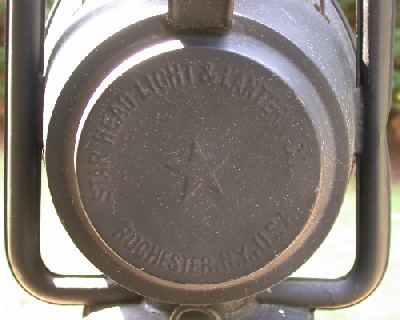
JeffPo's Inspector Lantern Page
Last update: 05/01/11


This is a Star Head Light & Lantern Company inspector lantern used by the New York Central Railroad. The lantern stands about 14 inches tall. The back of the shield has the Star company information.
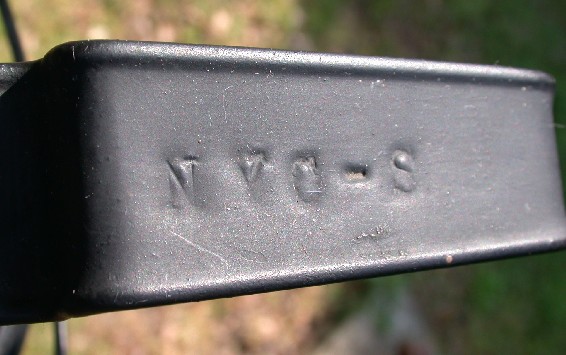
The top of the handle is stamped with NYC-S, for New York Central.

This particular globe is etched with N.Y.C.S indicating the New York Central Railroad. I haven't seen that many inspector lanterns that also have a globe that is marked for the railroad it belonged to.
The inspector lantern was a specialized type of railroad lantern used by railroad inspectors, or “car knockers”.
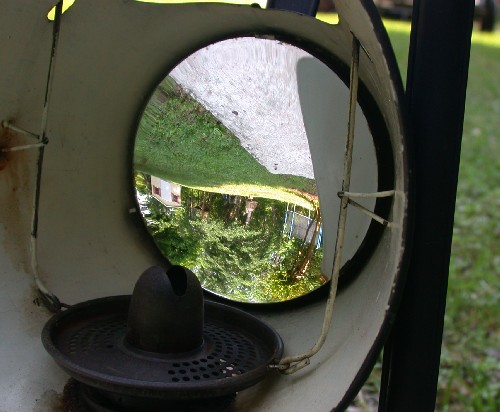
Inspector lanterns were designed (by use of a concave mirror reflector and shield) to throw a lot of light in one direction, enabling the railroad inspector to do his job of inspecting the wheels, bearings, couplings, and various other parts of the railroad cars. They used large globes with large fuel founts. The lanterns were generally used in rail yards and terminals, and weren’t swung to and fro, so it was okay for them to be a little more bulkier than standard signaling lanterns, .
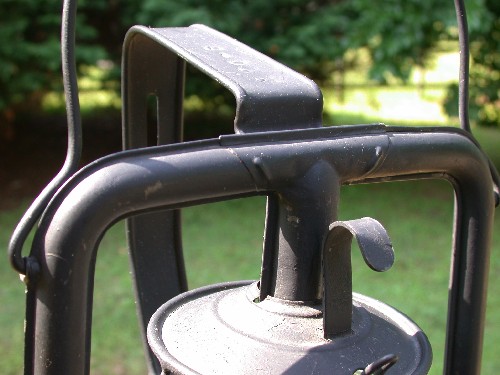
This is an example of a "hot blast" lantern. Hot air from the center is delivered to the flame by the tubes on the sides to promote combustion.
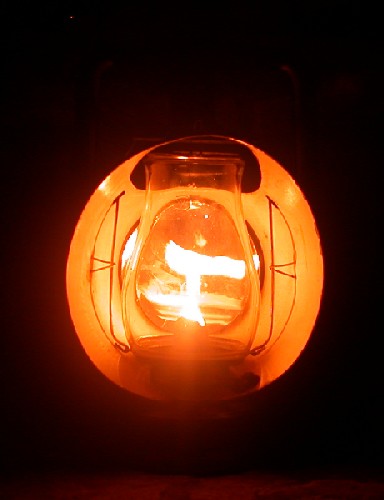
Here you see the lantern in action at night. While you can't see it in this image, the light has a very directional beam because of the mirror. This enabled the railroad worker to put the light exactly where they needed it. The burner is actually turned down quite a bit in this image.
Railroad Inspectors
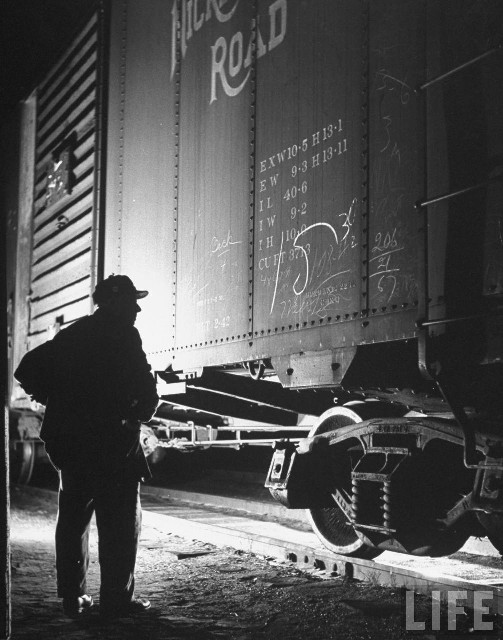
Railroad inspector inspecting wheels, brakes, journal boxes of passing boxcar. Switch Engine-Chicago, Delaware. Credit: LIFE magazine, 1943, by Walter Sanders.
The railroad inspector’s job was to examine the rail cars to make sure they were in good operating condition. He looked for defects that could possible lead to accidents or a delay in work for the railroad. When the railroad wasn’t moving, it wasn’t making money. The inspector would go up and down the consist of cars, looking, listening, and thinking. He would tap the wheels and axles, which is how they got the term “car knocker”.
Passenger and freight cars are examined. They look at everything, from the inside to the outside. They test brakes and hose connections as wheel as the roofs, walls, etc. Car inspections are a daily routine of railroad operations that happens day or night. The inspections are generally done at the important stations and yards with the incoming trains. Cars which do not meet the service and safety requirements are ordered out of the train for repairs. Safety is the number one issue. This is why you see some of the older railroad globes cast with SAFTEY FIRST in the glass.
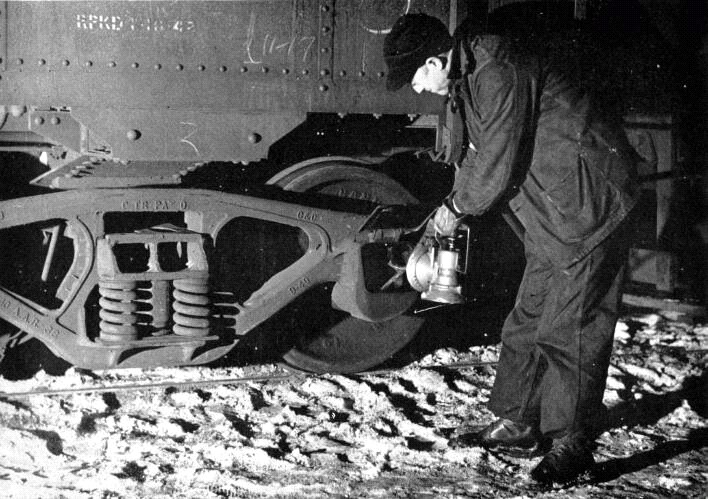
Railroad inspector examining the journal box to see if it is properly packed with oiled cotton waste. Credit: Thomas Ehrenreich and Catskill Archive.
New York Central Railroad History
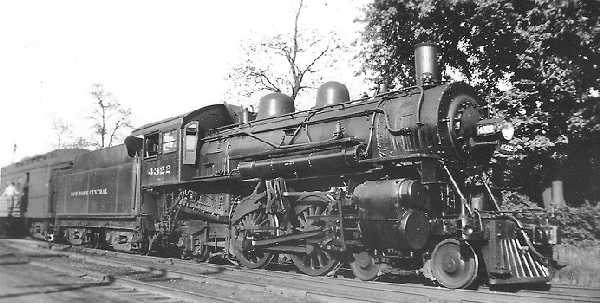
This is an image of an Atlantic 4-4-2 type steam engine. An unknown photographer recorded this image on May 28, 1937, in the waning years of its use. Image from the Richard Leonard's New York Central collection.
The New York Central Railroad was founded in 1853 by a merger of ten railroads. Headquartered in New York, it served a large portion of the area with extensive tracks in New York, Pennsylvania, Ohio, Michigan, Massachusetts, and New England. The New York Central was known as a “water level route”, which meant most of its routes followed rivers and didn’t have significant grade. The steam locomotives of this railroad were built for speed. Financial failings in the 1960’s eventually meant it became a “fallen flag” (i.e. a railroad that no longer exists) in 1968 when it joined the Pennsylvania Railroad in a merger that produced the Penn Central Railroad. Penn Central was merged into Conrail in 1976, which was purchased jointly by CSX and Norfolk & Southern in 1999.